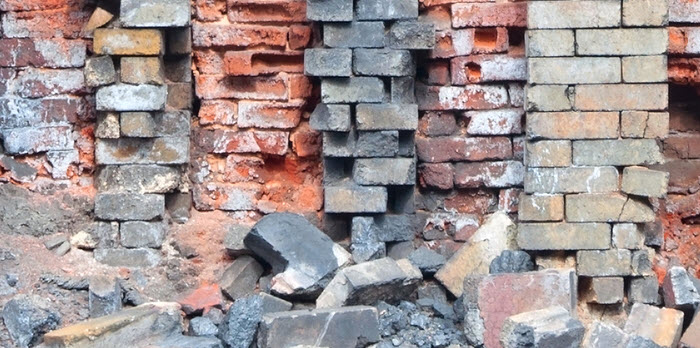The Refractory Failed … Or Did It?
 Sometimes a refractory fails. From our perspective (as installers) the most important question is: “What caused the refractory to prematurely fail?”
Sometimes a refractory fails. From our perspective (as installers) the most important question is: “What caused the refractory to prematurely fail?”
A majority of the time, the cause is not immediately known. An investigation is required. And even then a “conclusive” reason may never be found. But here is what our experience has shown us.
It Usually Isn’t Simple
When a refractory failure occurs, the facility operators usually assume the cause is one of two things:
- Bad installation
- Bad materials
First, let me say that improper installation could very well be the cause. After all, there is still the human element involved. And most of the time, faulty installation is fairly easy to determine. However, from our generations of experience and analysis, if the material has functioned properly for any reasonable length of time, generally the cause is not installation-related.
As far as bad materials go, while this is possible, it is not probable. Reputable refractory material manufacturers pay close attention to quality control (QC), material selection, mixing, packaging, etc. They can provide QC results throughout their process. Further, most refractory manufacturers source basic components from the same global suppliers who also provide QC results with their respective products.
So, if it’s not installation and it’s not materials, then what is the cause? Good question. If you’re truly interested in determining cause, you have to go back to the main factors involved:
- Design of furnace and/or process equipment
- Detail engineering
- Refractory material selection and specification
- Refractory anchor type, spacing and welding
- Installation of lining
- Dry-out (curing) of the refractory
- Start-up
- Operational practices
- Maintenance practices
The Refractory Failed Due to a Complex Chain of Events
Our experience shows that in the overwhelming majority of cases there is never one, definitive cause, but instead a “chain-of-events” that lead to the “failure.” In other words, there were multiple variables that impacted the refractory material in service.
Remember, the refractory material is only one component in the overall design of process equipment and industrial furnaces. It is sensitive to (and influenced by) time, temperature and operational factors.
In our experience, the culprit will likely be one (or a combination) of the following:
- Improper combustion (fuel, ratios, atmospheres, flow, etc.)
- Flame impingement (flame geometry, improper set-up, etc.)
- Improper furnace controls (PLC’s controls, circuitry, thermocouples, dampers, etc.)
- Operational change (cycling, throughput, load, etc.)
- Operational procedures
- Maintenance practices
- Shell and lining movement due to a difference in expansion rates
- Mechanical stresses
- Environmental factors
- Catalysts
From a refractory perspective, these all impact and can cause:
- Excessive temperatures (shrinking, etc.)
- Hot spots
- Excessive cracking due to spalling, thermal shock (a result of temperature fluctuations), mechanical shock or compressive forces, linear change, bending, etc
- Structural issues
- Erosion and abrasion of the refractory lining
- Anchor failure
- Failure of the steel shell which supports the refractory
- Mechanical damage
All of the above can cause the refractory material to fail sooner than originally expected. As variables do change, the selection of the refractory used may need to be reconsidered. If there are new variables that the product must face, then an upgrade or change in material may be warranted.
If you have questions about refractory failure, we would love to hear them and share our insight with you. Don’t hesitate to give us a call.
Comments are closed.

